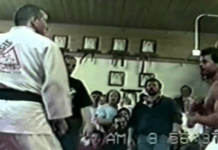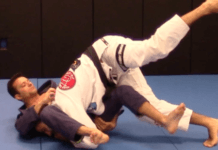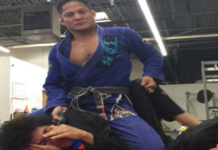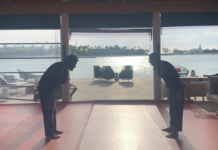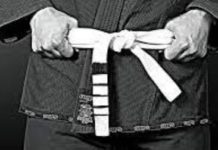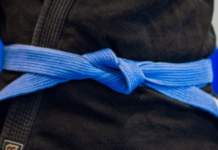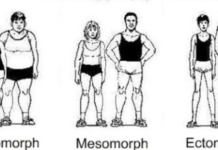There are physical risks associated with any type of sports and fighting sports like BJJ . Chances are higher if you are new, not trained enough or simply overlook the little tips that lay emphasis on safety. However, many injuries are unexpected, especially wrist injuries, regardless if you are just starting out on the mat or in competition. The most common ways these injuries have occurred are when you are in your gi as it sometimes gets in the way; it is also caused by accidents such as slipping over your hand and your body weight being collapsed over your extended wrist. Sometimes, moves such as submissions like wrist locks can also be blamed if they are not done correctly or if they are too lethal by default.
Whatever the causes are, wrist injuries do not occur that often in comparison to other types of injuries in BJJ but the fact remains that they are the most unexpected ones. So, it is best to know what can cause them to happen and how they can occur by getting a good understanding of how our hands are built.
Structure of the wrist
Your hands are made up of ligaments, tendons and the inner structure includes two major sets of bones. The first is called the carpals, or metacarpals, that are 8 tiny bones aligned on two rows and connected together with almost two dozens of ligaments; these are the ones that are responsible for the movement of your wrists. The other type of bones is called the phalanges, they make up the bones of your fingers and are responsible for their movement. Both of these bones are joined together, create a bridge with the forearm, the radius, and ulna along with the 5 metacarpals of the hands. Talking about the wrist, it is made up of two of the carpals called the radiocarpal and the metacarpal, these bones act like a joint which gives the wrist is freedom of movement. It is because of this freedom that the wrist is able to perform the flexion, extension and deviation movements, it is because of these actions that you are able to perform grappling and submission moves in BJJ.
How Can Your Wrist Take Damage?
Now how is the wrist susceptible to damage when you are training? Well, there are two more bones you need to know about, the scaphoid and the lunate. When you are in a compression lock, the force is exerted to the wrist where the scaphoid is located and since the scaphoid is connected with the lunate, the pressure is passed on towards it as well. The lunate is a support bone that is dependent one some ligaments and the scaphoid if a great force is experienced by these two bones than these two structures cannot bear the burden if it’s too high. There is an entire network of connectivity with all of these bones being attached, if one area bears a force that is out of its limit, then the entire network suffers and it leads to some great pain or potential injury.
The Types of Writs Injuries that Can Occur
The most common types of injuries that can occur on your wrist are either flexion or extension based. The examples of a flexion based injury can be when you are in a powerful wrist lock and for an example for an extension based injury can be a sudden stretching of the hand when you are going for a grapple. The wrist locks can also cause sprains, damage to your ligaments and if the force is too excessive then you can even end up with a fracture. Other than the wrist locks or other submission moves, you can get a damaged wrist from falling down and landing on the hands abruptly by either a sweep or a takedown.
If we talk about the sprains in more detail, then they are caused when the ligaments, either the scaphoid or the lunate take damage. In conditions worse than a sprain, you can get a fractured scaphoid and that is a bone that is most likely to break because it is not built to withstand such pressure. What is worse is that if you end up with a fractured scaphoid, it takes longer to heal because the blood supply is not good, other cases include it leading to malunion or avascular necrosis, also called bone death, if it is not treated properly.
Another common way your hand can be injured if you are landing strikes incorrectly or on a harder surface. Most BJJ athletes end up with broken, jammed or sprained wrists and fingers if they extend or bend their hand too far in an unnatural way. The bone that takes the hit is a metacarpal and if it’s a jammed finger then your tendon is likely injured. It takes some time to heal through these but proper care should be taken most likely a long rest until everything is back to normal.
How to Treat Wrist Injuries?
It is advisable to seek proper medical aid when a wrist injury happens but if you do not have the time or are out of reach, then you can use the R.I.E method (Resting, Icing, Elevating) that can treat a variety of bone or tendon damage. The problem with most of the wrist injuries is that many joints are involved and joints do not get much blood flow. The flow of the blood will determine how quickly the wound heals, thus, the basis of this method is to accomplish that purpose. To do this you would need to:
- Rest your hand, stop whatever it is you are doing.
- Apply ice for about 10 to 20 minutes and 10 times a day. Keep this up for the first two days of the injury. This will help with most of the swelling.
- Elevate the injury above your heart to further reduce swelling and any inflammation.
- When you get to the third day, the swelling should be little to non-existent. Use the wet heat treatment method as it will increase the blood circulation to the affected area and increase the healing effect.
- Get a brace to support your wrist and protect it from moving as it can cause further injury. Keep the brace for the next few days.
Check also:



